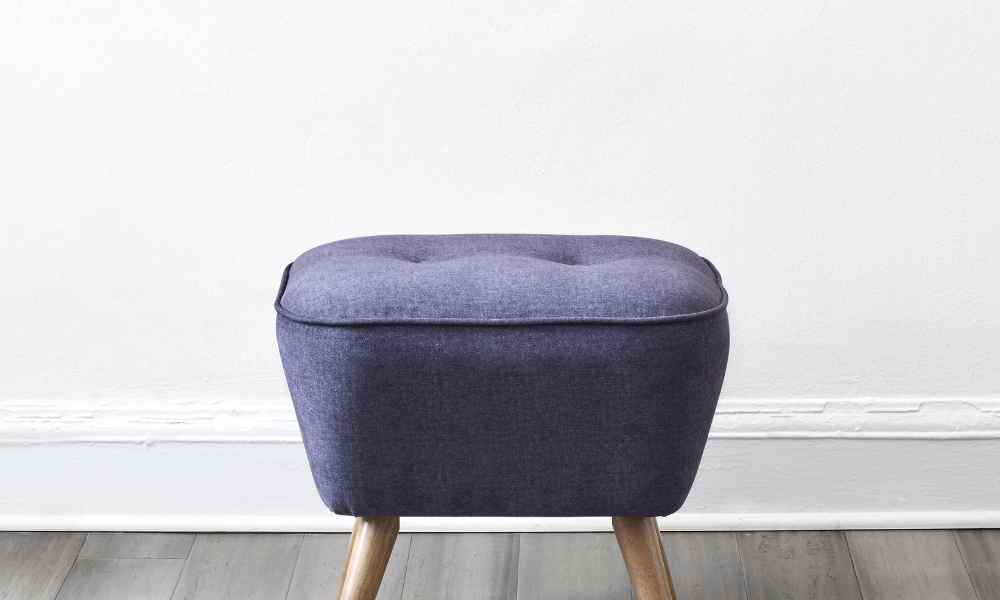A round ottoman is not only a functional piece of furniture but also an accent that can elevate the aesthetic of any room. However, over time, the fabric of an can wear out, become outdated, or simply no longer match the decor. Instead of purchasing a new one, recovering your ottoman is a cost-effective and creative solution. This process allows you to choose a fabric that reflects your personal style while giving your a fresh, new look. In this guide, we will walk you through the steps needed to recover a round ottoman, ensuring a professional finish that will extend its lifespan.
Materials and Tools Required
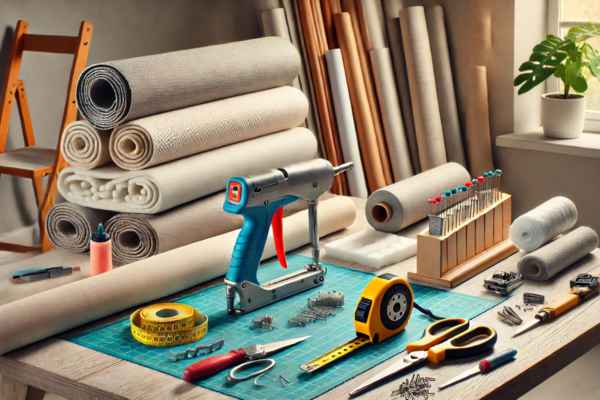
Before starting the project, it’s essential to gather all the necessary materials and tools to ensure a smooth process. You’ll need fabric of your choice, foam padding if additional cushioning is desired, a staple gun with staples, a pair of scissors, a measuring tape, and a screwdriver to remove and reattach any legs or hardware. Additionally, a marker or chalk will be helpful for marking the fabric, and a sewing machine may be required if it needs to be hemmed or sewn. Having all these tools and materials ready before you begin will make the recovery process more efficient and enjoyable.
Preparing the Ottoman
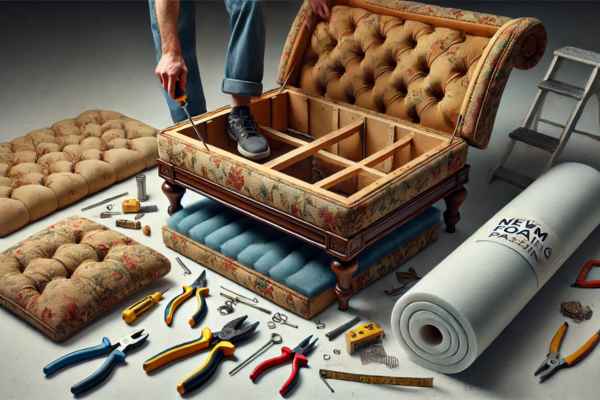
To start, you need to prepare your ottoman for its makeover. Begin by removing any legs or hardware attached to the, using a screwdriver if necessary. This step ensures that the fabric will lie flat and be easy to work with. Next, carefully remove the existing. Depending on the age and condition of the ottoman, this may involve removing staples or tacks. Once the old fabric is removed, inspect the padding underneath. If it is in good condition, you can leave it as is; if not, replace it with new foam padding to restore comfort and shape. This preparation phase is crucial to achieving a polished and professional result.
Measuring and Cutting New Fabric
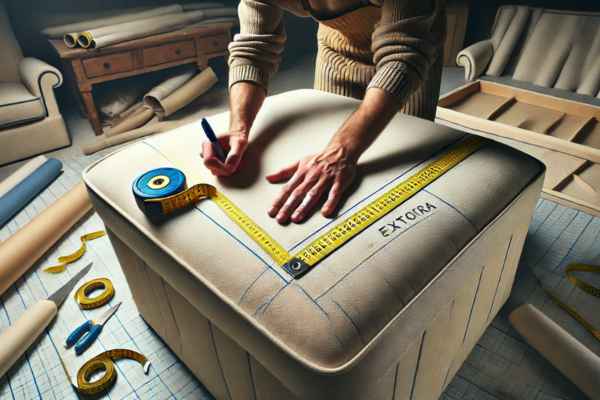
Once the ottoman is prepared, the next step is to measure and cut the new fabric. Use a measuring tape to measure the diameter of the top and the height of the sides. Add a few extra inches to these measurements to allow for them to wrap around the edges and be secured underneath. Lay the fabric on a flat surface and mark the measurements with a marker or chalk. Carefully cut the fabric along the markings, ensuring straight and clean edges. Proper measuring and cutting are key to ensuring that the fits snugly and evenly around the ottoman, resulting in a seamless and professional appearance.
Padding and Upholstery
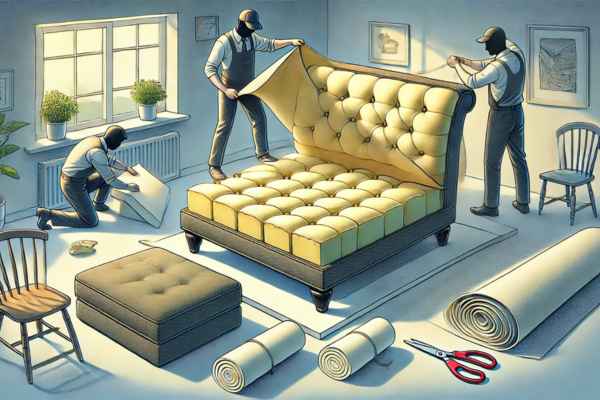
Once the fabric is measured and cut, it’s time to focus on the padding and upholstery. If the original padding is worn or uncomfortable, this is the perfect opportunity to replace it. Using high-density foam or batting, cut a piece to match the dimensions of the ottoman. Ensure the padding is evenly distributed, especially around the edges, to avoid any lumps or unevenness when the is applied. Place the padding securely on the and then drape the pre-cut fabric over it. This step is crucial in ensuring that the ottoman feels comfortable and looks plush, adding both functionality and style to your piece.
Securing the Fabric
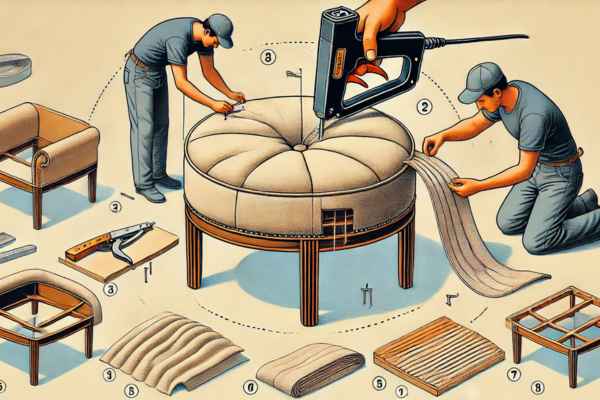
With the fabric draped over the ottoman, the next step is to secure it in place. Starting at one side, use a staple gun to attach the to the underside of the, pulling it taut as you go to eliminate any wrinkles or sagging. Work your way around the ottoman, alternating sides to maintain an even tension on the fabric. For a round ottoman, it’s important to make small, evenly spaced folds or pleats as you staple the to accommodate the curved shape. This ensures a smooth and tight finish that hugs the contours of the perfectly. Once all the fabric is secured, trim any excess material to keep the underside neat.
Finishing TouchesFinishing Touches

After the fabric is securely in place, it’s time to add the finishing touches that will give your ottoman a polished, professional look. Reattach any legs or hardware that were removed during the preparation phase, ensuring they are tightly screwed in. If you want to add an extra decorative touch, consider using trim, piping, or nailhead accents along the edges where the ottoman meets the ottoman. These details not only enhance the aesthetic appeal but also hide any visible staples or seams, giving a refined and finished appearance. The finishing touches are what transform your DIY project into a piece that looks store-bought.
Maintenance and Care
To keep your newly recovered ottoman looking fresh and vibrant, proper maintenance and care are essential. Regularly vacuum the fabric to remove dust and dirt, and spot clean any spills or stains as soon as they occur using a mild detergent or cleaner. If you used a washable fabric, consider removing it periodically for a thorough cleaning. Additionally, rotating occasionally can help ensure even wear on all sides. By following these maintenance tips, you can prolong the life of your ottoman’s, keeping it looking new and stylish for years to come.
Common Challenges and Solutions
Recovering a round ottoman can present several challenges, particularly for those new to upholstery projects. One common issue is achieving a smooth, wrinkle-free finish on the curved surface of the. To address this, it’s essential to work slowly and methodically, pulling the fabric taut as you staple it and making small pleats as needed to accommodate the curve. Another challenge may arise when trying to align patterns correctly. To avoid misalignment, take extra care during the measuring and cutting stages, ensuring the pattern remains centered and symmetrical. Additionally, working with thick or heavy fabrics can make it difficult to secure the material tightly. In such cases, using a high-powered staple gun and strong staples will ensure the stays in place. Anticipating these challenges and knowing how to address them can make the process smoother and more successful.
Cost and Budget Considerations
Planning to recover a round ottoman, it’s important to consider the costs involved. The price of fabric can vary widely depending on the material and quality, with luxurious fabrics like velvet or leather costing significantly more than basic cotton or polyester. Additionally, you may need to purchase padding, staples, and other supplies if you don’t already have them on hand. Budget-conscious DIYers can save money by shopping for remnants, using coupons, or repurposing fabric from other projects. It’s also worth considering the time investment; while doing it yourself can be more affordable than hiring a professional, it does require time and effort. By carefully planning your budget and making smart purchasing decisions, you can recover your in a way that fits your financial constraints without sacrificing style or quality.
When to Seek Professional Help
While many people can successfully recover a round ottoman themselves. There are times when it might be wise to seek professional help. If your ottoman has intricate detailing, such as tufting or elaborate stitching. Or if you’re working with an expensive or delicate fabric, a professional upholsterer can ensure a flawless finish. Additionally, if you find the project too daunting or time-consuming, hiring a professional can save you the hassle and ensure the job is done quickly and efficiently. Professionals also have access to specialized tools and materials that can make a significant difference in the quality of the finished product. Ultimately, the decision to seek professional help depends on your confidence in your skills, the complexity of the project, and your budget.
How Much Fabric Do I Need to Recover a Round Ottoman?
Determining how much fabric you need to recover a round ottoman depends on the size of the ottoman and the fabric’s pattern. For a standard-sized, you’ll generally need about 2 to 3 yards of. To get an accurate measurement, start by measuring the diameter of the ottoman’s top and the height from the top to the bottom edge, including any padding you plan to add. Add a few extra inches to these measurements to allow for wrapping the fabric around the edges and securing it underneath. If you have a large pattern or repeat. You may need to purchase additional fabric to ensure the pattern is aligned correctly. It’s always better to have a little extra than to run short during the project. With the right amount of material, you can ensure a seamless and professional finish.
Can I Use Any Type of Fabric for Recovering My Ottoman?
Selecting fabric for recovering your round ottoman, it’s essential to consider both aesthetics and functionality. While you can technically use any type of, not all materials are equally suited for upholstery projects. Durable fabrics like cotton, canvas, linen, or synthetic blends are popular choices because they can withstand frequent use and resist wear and tear. Fabrics with a bit of stretch, such as polyester blends, are easier to work with, especially on curved surfaces like a round.
If you want a luxurious look, consider using velvet or leather. But keep in mind that these materials can be more challenging to handle and may require special tools or techniques. Additionally, if you will be placed in a high-traffic area or if you have pets. Opting for a stain-resistant or washable fabric is wise. Ultimately, choosing the right ensures not only that your ottoman looks great but also that it remains durable and easy to maintain.
How Do I Know If the Ottoman Frame Needs Repair?
Before you begin the process of covering your ottoman, it’s crucial to assess the condition of the frame. And with a sturdy frame will provide a solid foundation for the new fabric and ensure the longevity of your efforts. Start by flipping the ottoman over and inspecting the joints and connections. If you notice any wobbling, loose joints, or creaking sounds, these are signs that the frame may need repair. Additionally, check for any cracks or splits in the wood, as these can weaken the overall structure. If the frame feels weak or unstable, it’s advisable to repair or reinforce it before proceeding with the reupholstery. This might involve tightening screws, applying wood glue, or replacing broken parts. Ensuring the frame is in good condition will make your ottoman more durable and prevent future issues that could damage your new upholstery.
Conclusion
Recovering a round ottoman is a rewarding DIY project that allows you to breathe new life into a beloved piece of furniture. By carefully selecting the right fabric, ensuring the frame is sturdy, and following the proper steps. You can achieve a professional-looking result that enhances your home’s decor. While challenges may arise, such as working with curved surfaces or aligning patterns. With patience and attention to detail, you can overcome these obstacles. Whether you’re updating an old to match your current style or simply want to try your hand at upholstery. This guide provides you with the knowledge and confidence to take on the task. With a bit of effort, your recovered ottoman will not only look stunning but also provide comfort and functionality for years to come.
